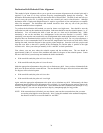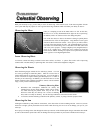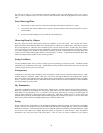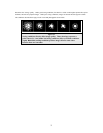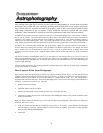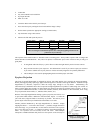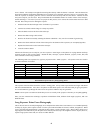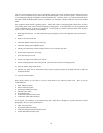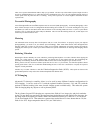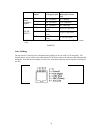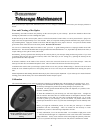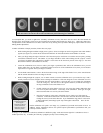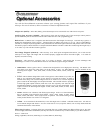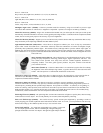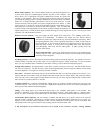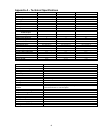42
There is no exposure determination table to help you get started. The best way to determine exposure length is look at
previously published photos to see what film/exposure combinations were used. Or take unguided sample photos of
various parts of the sky while the drive is running. Always take exposures of various lengths to determine the best
exposure time.
Terrestrial Photography
Your telescope makes an excellent telephoto lens for terrestrial (land) photography. Terrestrial photography is best
done will the telescope in Alt-Az configuration and the tracking drive turned off. To turn the tracking drive off, press
the MENU (9) button on the hand control and scroll down to the Tracking Mode sub menu. Use the Up and Down
scroll keys (10) to select the Off option and press ENTER. This will turn the tracking motors off, so that objects will
remain in your camera's field of view.
Metering
The Advanced Series telescope has a fixed aperture and, as a result, fixed f/ratios. To properly expose your subjects
photographically, you need to set your shutter speed accordingly. Most 35mm SLR cameras offer through-the-lens
metering which lets you know if your picture is under or overexposed. Adjustments for proper exposures are made by
changing the shutter speed. Consult your camera manual for specific information on metering and changing shutter
speeds.
Reducing Vibration
Releasing the shutter manually can cause vibrations, producing blurred photos. To reduce vibration when tripping the
shutter, use a cable release. A cable release keeps your hands clear of the camera and lens, thus eliminating the
possibility of introducing vibration. Mechanical shutter releases can be used, though air-type releases are best.
Blurry pictures can also result from shutter speeds that are too slow. To prevent this, use films that produce shutter
speeds greater than 1/250 of a second when hand-holding the lens. If the lens is mounted on a tripod, the exposure
length is virtually unlimited.
Another way to reduce vibration is with
the Vibration Suppression Pads (#93503). These pads rest between the
ground and tripod feet. They reduce the vibration amplitude and vibration time.
CCD Imaging
Advanced GT telescope's versatility allows it to be used in many different f-number configurations for
CCD imaging. It can be used at f/6.3 (with the optional Reducer/Corrector), f/10, and f/20 (with the
optional 2x Barlow) making it the most versatile imaging system available today. This makes the system
ideal for imaging deep-sky objects as well as planetary detail.
The key factors for good CCD imaging are; exposure time, field-of-view, image size, and pixel resolution.
As the F/# goes down (or gets faster), the exposure times needed decreases, the field-of-view-increases, but
the image scale of the object gets smaller. What is the difference between f/6.3 and f/10? F/6.3 has about
2/3 the focal length of f/10. That makes the exposure time needed about 2.5 times shorter than at f/10, the
field of view 50% larger compared to that of f/10. (see Table below)



